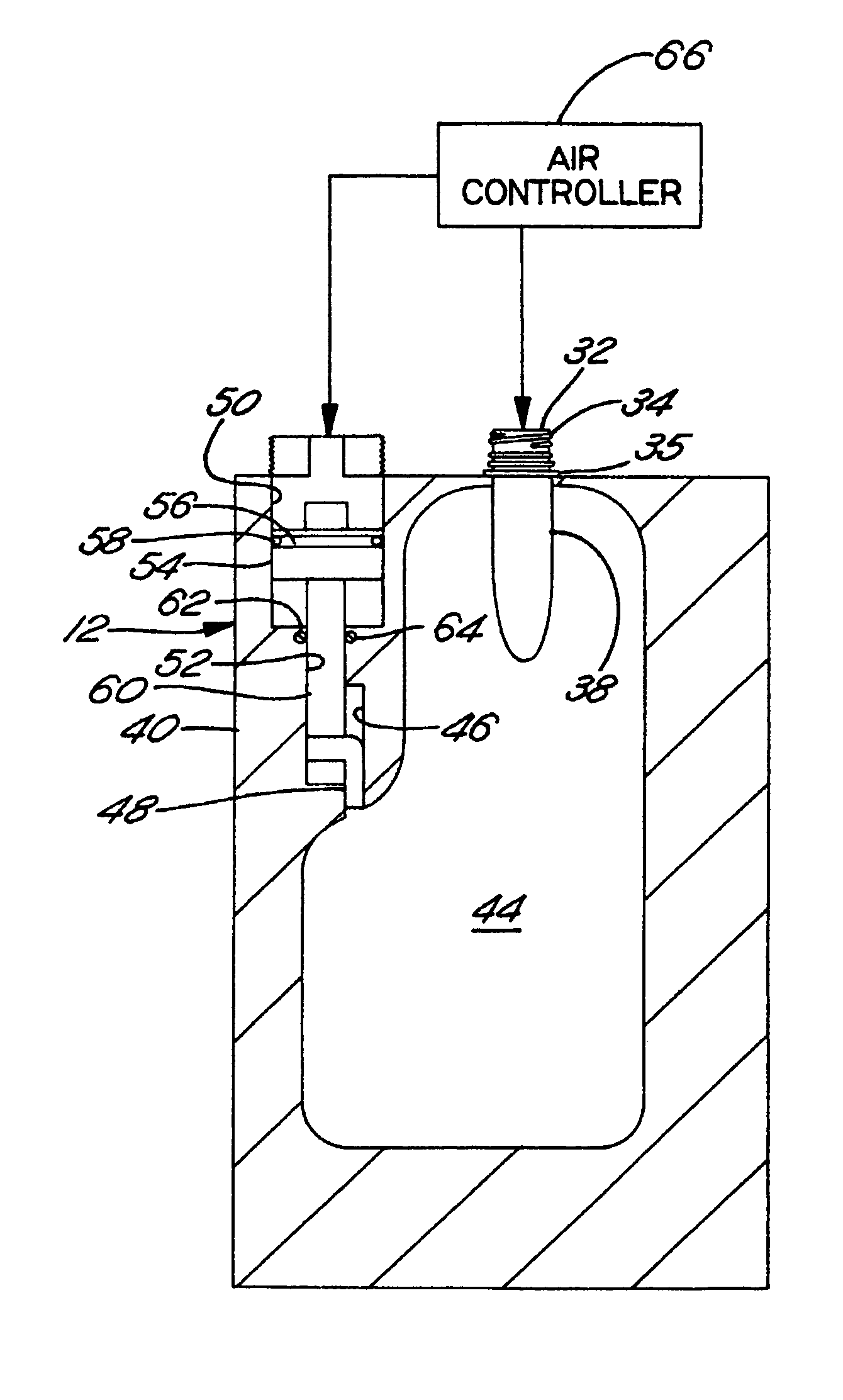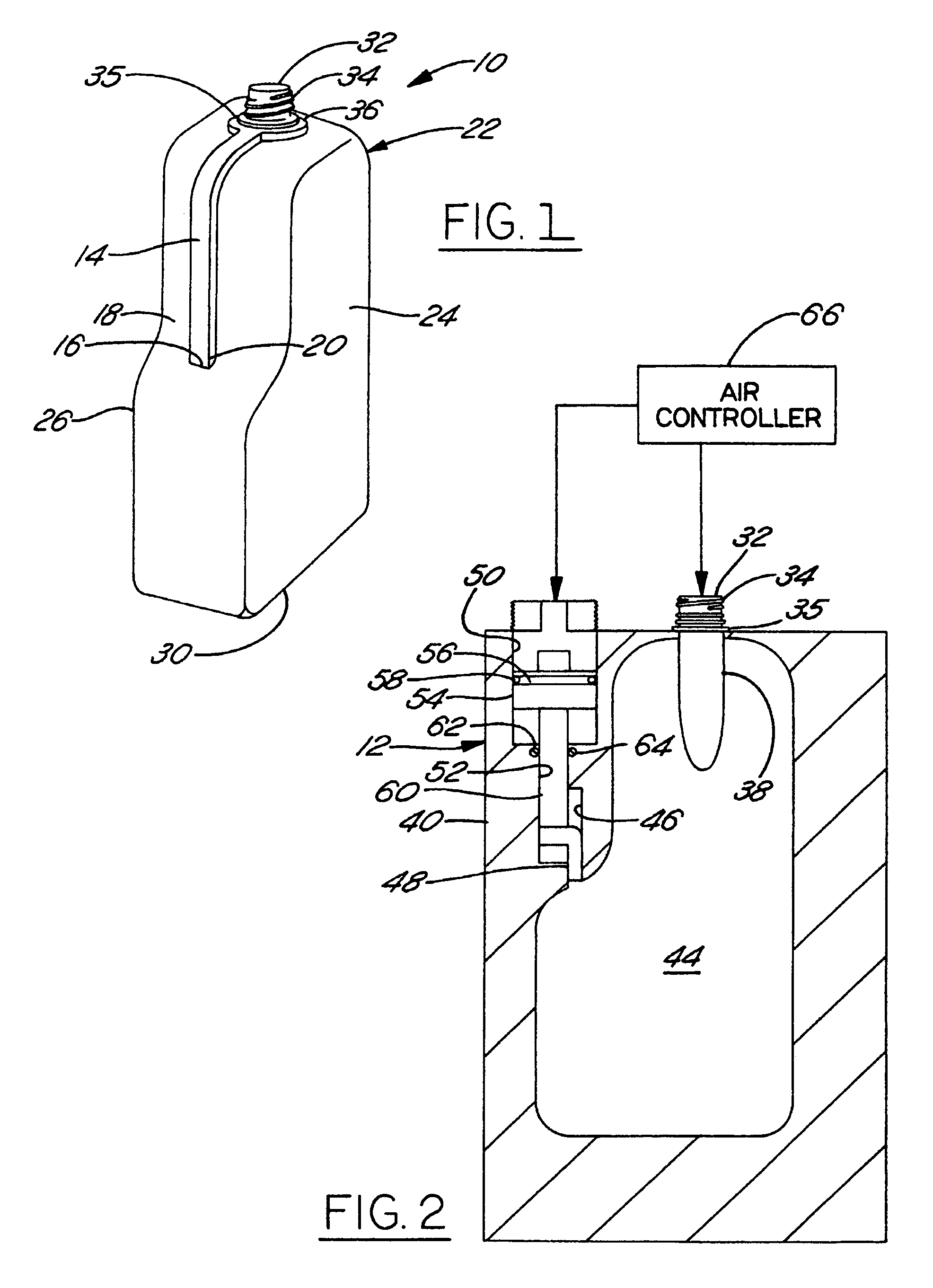Method of reheat blow molding a container
a technology of reheating and blow molding, which is applied in the direction of rigid containers, transportation and packaging, and other domestic articles, can solve the problems of increasing the overall cost associated with their manufacture, the inability to incorporate a handle on the container, and the complexity of the manufacturing process, so as to achieve the effect of low cost, low cost and low cost of manufactur
- Summary
- Abstract
- Description
- Claims
- Application Information
AI Technical Summary
Benefits of technology
Problems solved by technology
Method used
Image
Examples
Embodiment Construction
[0011]Referring in more detail to the drawings, FIG. 1 illustrates a container 10 constructed according to one aspect of the invention. The container 10 is formed in a blow mold 12 (FIGS. 2-4) using a reheat blow molding process. To facilitate reducing the costs associated in forming the container 10, the container 10 is constructed for receipt of a handle 14 in a secondary post-molding operation. To facilitate attachment of the handle 14 to the container 10, at least one pocket 16 (FIGS. 1 and 4) is formed in a wall, shown here as a sidewall 18 of the container 10, for secure attachment of the handle 14 within the pocket 16. Upon attachment of at least one end 20 of the handle 14 within the pocket 16, the container 10 is easily carried by the handle 14 in use.
[0012]The container 10 is preferably formed from a strain-hardenable material, such as polyethylene terephthalate (PET), which is a copolymer, and copolymers such as polybutylene terephthalate, polyethylene naphthalate (PEN), ...
PUM
| Property | Measurement | Unit |
|---|---|---|
| pressure | aaaaa | aaaaa |
| shape | aaaaa | aaaaa |
| strain-hardenable | aaaaa | aaaaa |
Abstract
Description
Claims
Application Information
 Login to View More
Login to View More - R&D
- Intellectual Property
- Life Sciences
- Materials
- Tech Scout
- Unparalleled Data Quality
- Higher Quality Content
- 60% Fewer Hallucinations
Browse by: Latest US Patents, China's latest patents, Technical Efficacy Thesaurus, Application Domain, Technology Topic, Popular Technical Reports.
© 2025 PatSnap. All rights reserved.Legal|Privacy policy|Modern Slavery Act Transparency Statement|Sitemap|About US| Contact US: help@patsnap.com



